#egregor
Text
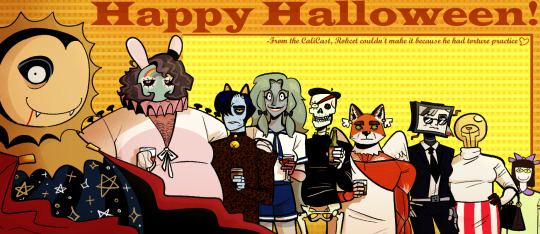
Happy Halloween!
#californiaverse#celeste cosmos#arin paleta#johnny pinkerton#charity honeyflower#ars moriendi#quinn quantum#unit vertigo#saint#egregor#by: trevor
115 notes
·
View notes
Text
Un egregor es producido por una poderosa corriente de pensamiento colectivo. Cuando un gran número de personas se concentran juntas sobre el mismo tema con la misma intensidad, desarrollan una energía común. La actividad concentrada recoge las intenciones de cada uno en una conciencia colectiva. Detrás de la impresión personal, un conjunto de procesos regulados se desarrolla entre nosotros.
El escritor Bréthes, ha clasificado al egregor en tres categorías:
🌐 Los neutros: son los más numerosos; amistades, círculos profesionales. No son muy inductivos en términos de pensamiento. Las personas comparten cosas pero viven sus vidas sin que esto tenga un impacto en su psique.
🌐 Los limitantes: son los egregores del ego. El individuo adopta las creencias y los patrones de comportamiento del grupo; partidos políticos, religiones. Son los más poderosos dado que son los más compartidos ampliamente. El egregor suele apoyarse en imágenes. En todos los tiempos las sociedades han relacionado sus convicciones con un fuerte simbolismo, es el ser humano quien proyecta su pensamiento en el símbolo. En el extremo de esta categoría están los radicales, las pandillas y sectas.
🌐 Los fructíferos: elevan la conciencia, tratando de unir y reunir; expresan los valores de la justicia, equidad y bondad. Son las energías útiles para la comunidad mundial; adoptan la forma de corrientes de la psicología humanista, asociaciones humanitarias o movimientos espirituales.
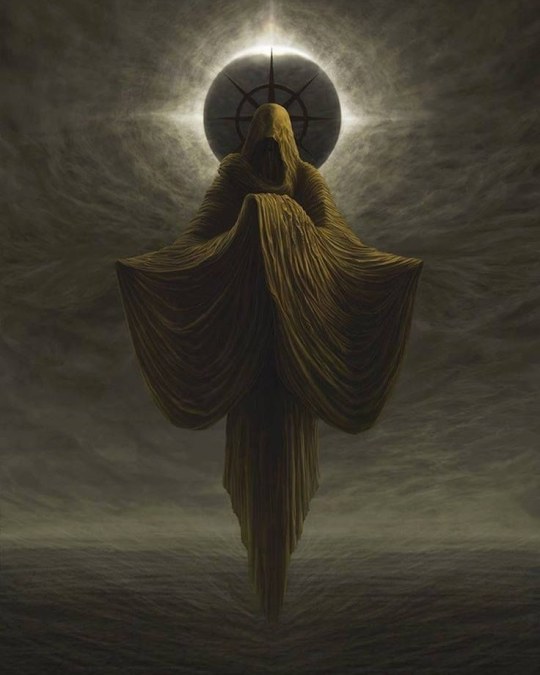
#elcaminoeshaciaadentro#conciencia#espiritualidad#crecimiento espiritual#consciencia#crecimientopersonal#egregor
3 notes
·
View notes
Text
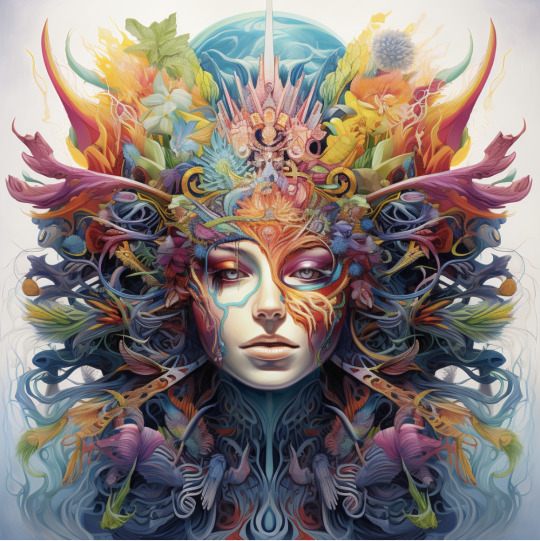
Was ist ein Egregor oder Tulpa?
Ein Egregor kann als eine kollektive Gedankenform verstanden werden, die durch die gemeinsame Energie und Absicht einer Gruppe entsteht.
Es ist ein kraftvolles Wesen, das durch die bewusste, gebündelte Kraft seiner Anhänger erschaffen wird und eine eigene Persönlichkeit sowie Ziele entwickeln kann... weiter lesen auf: www.sarahluescher.com
0 notes
Photo

@egregoroficial es el primer invitado de @blackflagstudio #blackflaglive 2023. Tremendos músicos y una aun mas extraordinaria cantante @magdalilah Disfruten #egregor https://youtu.be/TaZlY1R1QfA en nuestro canal #youtube @youtube link en la bio @matiasinfrasonido @tuanjok @llamatealdelacamarita @elotroenfokefilms @ripoaudio (en Blackflag Studio) https://www.instagram.com/p/CpquHcXLWsi/?igshid=NGJjMDIxMWI=
0 notes
Text
Wie du dich aus dem Griff des Egregors befreien kannst
Wie du dich aus dem Griff des Egregors befreien kannst
Wenn die meisten Menschen an die Worte “Egregor” und “Magie” denken, kommen sie wahrscheinlich nicht auf die Idee, dass die beiden zusammen ein mächtiges Werkzeug für persönliches Wachstum sein können. Nachdem wir im 1. Teil dieser Serie erfahren haben, was ein Egregor ist und wie er wirkt, im 2. Teil dann Beispiele gehört haben, werde ich in diesem Blogbeitrag darüber sprechen, wie ein Egregor…

View On WordPress
0 notes
Note
tell me your pronouns or so god help me I will
legitimate question what pronouns would you guys diagnose me with based off vibes
#any pronouns you diagnose me with i will gain. it's like an egregore where if you believe it comes true.#sorry to disappoint everyone but my pronouns are boring old she/her (arguably she/they)#(i do not feel strongly about it but my friends default to 'they' as a base pronoun and refer to me as such often and I always respond so)
437 notes
·
View notes
Text

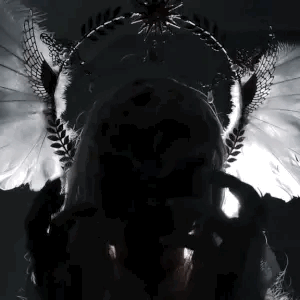




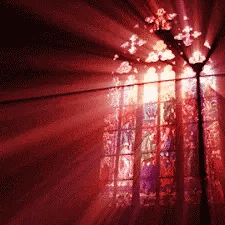
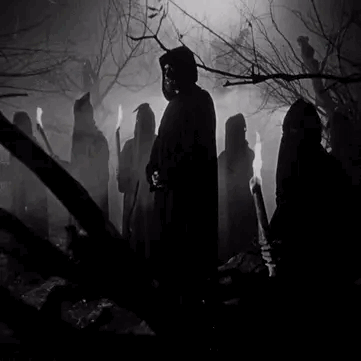

EGREGORE - an egregore (also spelled egregor; from French égrégore, from Ancient Greek ἐγρήγορος, egrēgoros 'wakeful') is a concept in Western esotericism of a non-physical entity or thoughtform that arises from the collective thoughts and emotions of a distinct group of individuals.
a concept stimboard for 'egregore gods' for anon!
🕯️-📜-🕯️ / 📜-🕯️-📜 / 🕯️-📜-🕯️
#stim#stimboard#egregore#concepts#sfw#black#brown#red#gray#grey#yellow#religion#kind of?#books#tarot cards#wings#biblically accurate angels#people#animation#paper#candles#flames#writing#calligraphy#stained glass#windows#hands#requests
90 notes
·
View notes
Text
I got another witchy FAQs question so I want to go ahead and share it.
This time, we're talking some basic chaos magic with different types of thoughtforms!
Please note that I am not an expert in chaos magic, nor do I consider myself a chaos magician, so feel free to (kindly) leave feedback or corrections as needed. ^^
Thoughtforms 101
Definition of Thoughtform: Thoughtform is a catch-all term from any entity that was created with or by human thought (conscious or otherwise).
Types of Thoughtforms: Common thoughtforms include sigils, servitors, thoughtform companions (aka tulpas), daemons, and egregores.
Sigils: Most folks who create sigils and use sigil magic probably don't think about sigils as a type of chaos magic or a thoughtform. However, sigils actually do fall into this category. Think of a sigil as being like a simple computer program that's powered by your mind. You give the program a basic function (such as protection or prosperity) and the magical "coding" of your intentions allows the sigil to carry it out.
Servitors: If sigils are basic computer programs, then servitors are robots. They're not sentient per se, as they still require the coding and programming that comes with intention and magical energy. Yet they're much more complex than a sigil and can carry out higher-level functions & multiple tasks (e.g., drawing in people to shop on your Etsy page for prosperity, or actively guarding a space or casting a magic circle for protection).
Thoughtform companions: The widespread term for this type is "tulpa," and creating/having one of these thoughtforms is commonly referred to as "tulpamancy." Since there's also a widespread controversy over these terms, I don't use them myself. I say "creating or working with a thoughtform," and I'll refer to the entity as a thoughtform or thoughtform companion. Regardless of the terminology or beliefs behind this category, they are defined as a separate consciousness created by the thoughts and actions of a human. The human is typically referred to as the "host," since the companion is typically treated as its own separate consciousness. These are fully sentient, autonomous beings with their own thoughts and feelings. They're generally created, either intentionally or not, as friends for the host (hence my personal terminology for them).
Daemons: This category is similar to a companion, but with a different origin and function. Daemons have been documented since ancient Greece, to my knowledge. A daemon is also a sentient entity, however, they are not created intentionally by the host (although they can be brought to the forefront by the human in question). A daemon is instead a conscious entity created by, and representative of, the human being's subconscious mind. They typically serve as helpers and mental guides for the human. They are not considered separate entities; instead, they're part of you.
Egregores: These are essentially the AIs of the thoughtform world. Whereas companions and daemons exist within the human mind, egregores are similar to servitors and sigils - created by the mind, but separate from it. Egregores are often made or manifested by a group of people intentionally for a purpose. E.g., a coven may create one as a guardian or a spiritual guide. They're also often created by accident from widespread symbols - for example, branding. And nations. Every time somebody posts a picture of the Starbucks logo, you're most likely feeding an egregore, according to one theory I've heard. Do I believe that personally? Not sure. (I do have an exact source for this one available on request.) As far as I know, egregores exist with varying degrees of sentience, power, and free will depending on the individual scenario (much like artificially intelligent computers & androids in science fiction).
Pop Culture Entities / Deities: These are often referred to as PCEs or PCDs. I prefer the former but I often use them interchangeably. Some folks prefer to be more specific. For example, Raiden from Mortal Kombat is considered a god in that series, so many folks would consider him a pop culture deity. Whereas Dean Winchester is *not* a deity in Supernatural - so he could be considered a pop culture entity instead. However, this is up to the preferences of the individual entity & practitioner.
Differences between PCDs and Egregores: Egregores are ALWAYS created, intentionally or not, by human energy and thought. PCDs, on the other hand, can have a mixed origin sometimes. Some of them may be pure egregores, manifested on purpose or by accident. Others may be preexisting spirits - often nature spirits that are aligned closely to the fandom content - that latch onto a fictional work as a power source, and eventually fuse with it. And then another theory is that PCDs are *all* preexisting spirits or even deities wearing a mask - so for example, folks with this belief would say that PCD Marvel Loki is just Loki appearing in a different form/aspect. I personally think that all PCEs have a unique origin and I try not to make any assumptions.
Where do I fact check you and/or learn more?: Unfortunately, it is *really damn hard* to find good, solid information on pop culture work because it's very new. And while there's *lots* of info on chaos magic, you have to be careful to check the reliability of the source, much as is the case with demonolatry sources. Fortunately, Tumblr is a great source to find other pop culture practitioners. I personally also have *some* sources available for these topics on request, I'm just too lazy to dig through my Drive right at this moment. :)
#thoughtforms#tulpamancy#chaos magician#chaos magic#sigils#servitors#egregores#pop culture paganism#pop culture witchcraft#pop culture magic#witchy tips#witchblr
260 notes
·
View notes
Text
the pagan urge to work with the mothman
#only problem is the question whether mothman is real or not#because depending on that he's either an egregore or a spirit or something else entirely#pagan#paganism#paganblr#mothman#cryptid#polytheist#deity work#spirit work#egregore#pop culture paganism#????
131 notes
·
View notes
Text
Please keep in mind that this post is SPG at best like a lot of pop culture paganism. It’s up to you to decide what you believe
What is a PCE?
A PCE is a pop culture entity while a PCD is a pop culture deity. The difference between the two is often based on personal definitions but the general consensus is that a PCE is a non god character while a PCD is canonically a god. A good example would be Genshin Impact. Childe would be a PCE as he isn’t a god while any of the archons would be considered a PCD.

The Theories
Now you may be asking how do these beings exist. Here are some of the most popular theories:
The Egregore Theory
So to start off what is an egregore? Good question. An egregore is a being that feed off of energy given to it by humans and uses that to fuel it/gain power. A lot of people consider deities in general to be egregores as a way of explaining how they sustain and get power.
How is an egregore formed? Now this is kinda up for debate but personally I like to think that stagnant energy kinda clumps together and forms what humans are putting their energy in.
The Deity Theory
This is the theory that pop culture entities are actually just deities wearing the faces of pop culture characters that sort of act like them to make humans more comfortable with them. My personal idea for this is say Apollo wants to work with your but you’re deep in another religion or don’t believe in the Greek gods so instead of showing up as Apollo he shows up as James Potter, or Will Solace, or Rapunzel, or any other Apollo coded character. This then leads you to trusting him more because he showed up as a character you love and trust.
The Combo Theory
So technically this is an addition to the egregore theory but it kind of expands on that. This is the theory that PCEs are egregores mixed with other beings. Let’s use Dabi as an example (because he is actually a combo being for me). The Dabi I work with has been around for hundreds of years. How is that possible if My Hero Academia has only been around for ten years? It’s possible because while Dabi is a Dabi Egregore, he is also a demon. Basically what happened was Dabi the egregore was walking around one day and stumbled upon a demon who acted almost exactly like him. The two then decided to do the equivalent of Steven universe fusion and became one. As for why they would do that, it was all about the power they could get being one being. Dabi the egregore gets power from people interacting with my hero and its fandom while the demon got power from a lives long deal he had going. They decided that (since they act so much alike and even look alike) it would be mutually beneficial to become one being. Does this mean that they can split and become demon and egregore again? Honestly no idea. From what I’ve been told, no because they have become so intertwined over the years that they don’t exist without the other. Going back to my Steven universe analogy, think of it like how in the final episode of the show white diamond takes Steven’s gem out of him expecting pink diamond to show up. Instead what happens is it’s Steven and there are now just two Steven’s that need each other to exist.
Here is a tumblr post that talks about pop culture paganism and god theory
https://www.tumblr.com/the-broken-stones/56076112677/pop-culture-paganism-and-god-theory
#gremlin’s witchy knowledge depository#witchcraft#pop culture deity#pop culture egregores#pop culture magic#pc magic#egregore
58 notes
·
View notes
Text
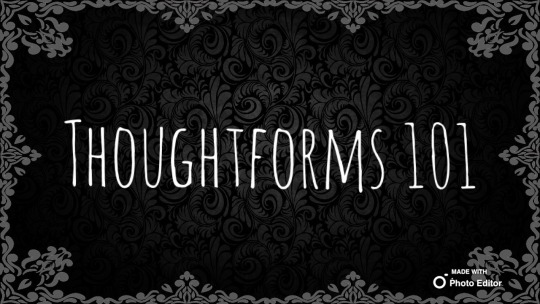

This is a topic that can get very confusing for those starting out. There are lots of interchanging terminology, beliefs, and constructs that not everyone sees fit to agree on. This can often create misunderstandings and propagate the misuse of certian energies making navigation for newcomers more than just problematic. In this blog, I will attempt to systematize some of the complexities enough to deliver a more organized path for beginners to follow and build upon.
Keep in mind, however, that while there are some definite rules to thoughtforms there is also a well of UPG around this topic. The knowledge surrounding thoughtforms changes quite considerably with the beliefs of the individuals that practice it. So take from this blog what you will.

The Basics
So I bet some of you are asking, what exactly is a thoughtform? Well, that’s a being created from our beliefs and thoughts. They are made up of energy and can be utilized in magickal workings. Now there is some confusion among some members of the community here. Sometimes the term is not seen as the umbrella term it really is and instead becomes a varying type all on its own. However, to fully understand where this name fits we need only break it down in its simple meaning. "A being formed by the power of thought." This clearly describes a variety of different beings, not just a singular one, hence why it's more traditionally used as an umbrella term.
⚜️ Creation ⚜️
A thoughtform’s creation will ultimately depend on the witch but essentially most agree it starts with finding a purpose. From there you can build it up starting with a name. A name binds the thing into existence so this is most often agreed upon to be a very important step. From this most people use that name to create a sigil. Others make a symbol on their own and bind it to the name afterward. Either way, it’s often seen as an essential step in the process. A sigil gives the thoughtform a physical foundation to draw energy from and affect the real world. Some witches in turn will then place that sigil on a vessel for their thoughtform to connect to, while others draw it in the air with energy.
Finally comes the fun part, designing. You can skip this process altogether but many enjoy deciding how this being is going to look. This is also a great opportunity to build more symbolism around it. Tie its appearance to its purpose and allow this to strengthen it. Once that’s done it’s time to begin the actual ritual. Now, many like to write out everything on a petition and/or draw a picture of the being. In my experience, this isn’t really needed but it helps quite a bit if you’re doing a more complex being (this will be discussed later in another section). It’s also good to decide on the finer details. Not just what you want your thoughtform to do, but what type it is, and what it’s not allowed to do as well.
Once the written portion has been completed (and drawing if you choose to use that), set it up in a place of power. Most people use their altar but you can also create a sacred space specially for this part. The ritual itself will essentially involve you going into meditative gnosis and forming the energy with your mind. (Visualization helps with this. Some people choose to picture a light forming into the being or a large cosmic egg. But that too is based on a user's preference.) This part takes focus so make sure there aren’t any distractions nearby. Once you’re finished greet your thoughtform and continue with any other magick you wish.
As for how long this is going to take, nobody can truly say. We each are different and how our energy works will ultimately decide how long things will take. However, in my own experience, I would say that most thoughtform creations vary based on complexity. The simpler the being the shorter amount of time it will need. For longer amounts of time, you may need to visit your uncreated thoughtform once a day. giving it energy each time to ensure its continued gestation.
⚜️ Feeding ⚜️
Think of your thoughtform as a computer. It’s programmed to function a certain way by the user and to keep it going you need to give it a battery or plug it into a port. In short, it needs something to draw energy from to work properly. How you feed your thoughtform will depend on its type, but for most people, they set their thoughtform's ability to feed during its creation process. Either going to it regularly to meditatively give it energy, to offerings, or even to preprogrammed sustainability, a thoughtform needs something to ensure its success.
⚜️ Setting A Time Limit ⚜️
Certain thoughtforms will need a time limit of some sort. This is usually predetermined by the creator and set during the creation process or a kill switch is kept in place for whenever the practitioner deems it necessary. (Like burning or tearing up the paper vessel or petition with the thoughtforms sigil). Now depending on who you ask, What thoughtforms should get a time limit will inevitably change. Some believe that all thoughtforms need a limit and thus rarely venture past the simple variety. While others believe that there are many more varieties that don’t need such a limit. I will cover this in further detail in later sections.
⚜️ Involuntary Creation ⚜️
This can happen sometimes, especially if there are lots of emotions around a certain belief. Things can manifest against our will and they can be both negative or positive depending on what energy was used to create them.
Servitors
Also called simple thoughtforms and simple servitors, they are the most common form of thoughtform and by far the easiest to create. They have no sentience to speak of and are driven only to complete their task. The purpose for their creation. It is everything to a servitor which is why many believe it’s the type of thoughtform that MUST have an end after that task is finished. To allow a servitor to exist without a purpose would be like a living hell to such a creature. It would be cruel and compared to torture some believe.
Now let’s say you did decide to let it remain. What exactly would happen? Well, there’s a variety of things really. One, if left unfed the servitor could simply vanish one day, but it would be a slow death. However, if you’re unlucky enough, it may just evolve sentience. When this sort of thing happens in such a situation the servitor is often already driven to madness and will become something akin to a parasite. Recklessly feeding off their creator to sustain themselves. This can cause exhaustion, dizziness, clumsiness, and in some more severe cases illness to the practitioner. And those who suffer from other forms of mental illness like depression and anxiety have often reported their symptoms getting worse. The best course of action for these sorts of beings is to extinguish them completely. They have no hope of being reasoned with.
Now let’s say you do feed your servitor, but you never give it a purpose. Then what happens? Well, they can still go mad as the life without a purpose is demeaning and arduous for such a creature. This is why some people like to give them new purposes. The problem is, a simple servitor isn’t made to properly sustain things like this. It would be like uploading a new program onto an older computer that isn’t equipped to properly run it. So while it may work for a little while, it will never be up to par like it was before, and eventually, you’ll have to accept that. You’ll be forced to get a newer model anyway. Problem is, that even these beings can still grow in sentience. And while they may not be as crazed as the ones mentioned before, because they’re not in a state of starvation, they may still express the dislike of such an existence. Some people report that once sentient, some servitors have simply run away or completely withdrew in their own depressive state. Ultimately wasting away because they wouldn’t eat. This is why it’s generally agreed upon that a simple servitor works its best when a time limit is in place.
Sentient Servitors
Also called complex servitors or complex thoughtforms, consider these beings a step up from your average servitors. Most often they are created with sentience or at the very least created with the intent to obtain sentience by growing into it as they do their job and experience the world around them. This type seems to have become more popular in recent years and has garnered its own subcategories in turn. These generally tend to be something concerning their purpose and will vary by practitioner. Some of the most popular is a familiar, home guardians, or personal protectors.
For the most part these beings are created without the intent to destroy them. This is because what they are needed for what generally takes regular upkeep as well as a mind that can analyze and learn just like we do so it can grow alongside you and learn different ways to cope with its overall objective. But that isn’t to say people don’t exist that give them time limits. However, that can bring up more controversy depending on who you talk to because now you’re destroying something that may not actually want to be destroyed. Something that wants to continue on and experience existence. When a thoughtform reaches this stage and they realize you may want to destroy them, they often start looking for a way out. A way to feed without the help of the witch. That way they can simply go off on their own. In lots of cases, a witch may gift their thoughtform with this ability so that when their task is done they can go ahead and make the way out.
Poltergeists
Now some of you may be surprised to see this category on this list but it really is a thoughtform. Looking into how some paranormal experts define these entities reveals that they are entities created from the negative energy accumulated in a certain place or around a certain individual, and that’s exactly what a thoughtform is. A poltergeist is always an involuntary creation, however, and is almost always negative as well. It’s known for throwing objects and making strange noises. Hence why their name means “noisy ghost” in German.
Egregores
These thoughtforms are created by a group of individuals instead of just a single person. They can be voluntary or involuntary, sentient or otherwise, it all depends on the conditions for their creation. For instance, some covens create an egregore for their personal group typically of the non-sentient variety, while other individual people may believe in something so much that the beings form involuntarily from that belief. Many use this way of thinking to explain how deity came to be. Declaring that all gods and goddesses as we know them are simply egregores believed into existence. Not everyone agrees with this sentiment, however, nor does everyone utilize the egregore label exactly the same.
While some say egregores can be both sentient and non-sentient, others have strong beliefs that the egregore can only be non-sentient and that once it grows to sentience it will become something else entirely. The former seems to be the most popular way of looking at it on our modern age though, so you're bound to find that this way of utilizing the egregore to be more prevalent in the ways of information.
Godforms
Also known as God Heads, this is probably the most confusing of all the types of thoughtforms simply because there are so many varying beliefs around it. More traditionally, godforms are statues or pictures portraying the image of a particular god. Through ritual, the god embodies these pieces and they become an extent of that deity. Some believers even associate people as being a part of that godform, and during those sacred ceremonies, the chosen individual becomes a direct speaker for the god they are channeling. However, in more modern times, the term has taken a considerable divergence into thoughtform territory.
It is believed by some that the godform is a type of deity, either created to be a god from the beginning or grown into one by an egregore. In more recent years, however, a godform is often depicted as being a more personalized entity. An individual's own personal god if you will. In this instance, they are created using a specific part of the practitioner's energy. Usually some part of a magical circuit like the elements, or the 8 circuits of consiousness. This entity in turn becomes heavily connected to the individual and will affect whatever cuircut or energy center they were made from. Let's say you made a god that draws from your fire energy. Therefore, your fire energy will grow and everything it affects will also grow. This entices the person to continue giving the god energy, through meditations, offerings, even an altar. It's given praises and prayers as well, just like any other deity.
Tulpa
The tulpa is often confused in our modern times as being nothing more than a servitor, but that understanding couldn't be more false. Traditionally Tulpa's are a concept from Buddhist nirmāṇakāya. It was a translated in Tibetan as sprul-pa and was the practice of creating an autonomous entity made from the individual's mind. It was manifested by a Buddha to teach and guide those who hadn't yet attained nirvana. Some have likened it to seem much like a ghost or apparition, walking between the physical and metaphysical realms. They were said to obey their master for the most part but were entirely sentient with their own thoughts and emotions.
Today, tulpamancers, often equate a tulpa to something kind of like an imaginary friend, but one that can actually manifest things. Tulpas are said to have the ability to use their creator's body, or even dwell inside of it completely. They can even operate it on their own should their creator allow it. Many, state that the tulpa often helps them out during difficult situations. They are created with the qualities that the user doesn't have so that they can take over in times when those qualities are needed. As for life span, that will definitely depend on the individual. Like regular thoughtforms, some say that the user ultimately decides if they want their tulpa to remain or vanish after they themselves have learned to obtain whatever qualities they had placed in their tulpa. Others say that the tulpa stays with you for life. Whatever the case, this thoughtform is definitely the most unique of the bunch.
Conclusion
Thoughtforms are an interestingly diverse form of magick. And while they are very prevalent within the chaos magick community, many magickal practitioners from all pathways come to utilize them within their crafts. As stated above, there are many unique beliefs surrounding them, and finding out what way is best for you can seem somewhat daunting. The best thing to do is take it slow, and practice, practice, practice. Thoughtforms are one of those things you learn best by doing. Just remember that what works for someone else may not work entirely for you. Go at your own pace, and find your own rhythm. Best of luck!
Further Reading
• Types of Ghosts (Poltergeists)
• Servitors (Chaos Magick)
• Thoughtforms
• Psychonaut Field Manual: Egregores
• Psychonaut Field Manual: Godforms
• Tulpa’s

#paganism#witchcraft#pagans of tumblr#chaos magician#chaos magick#eldritch magic#witches of tumblr#chaos witch#eldritch witch#chaos witchcraft#thoughtforms#thoughtform#servitor#egregore#godform
195 notes
·
View notes
Text

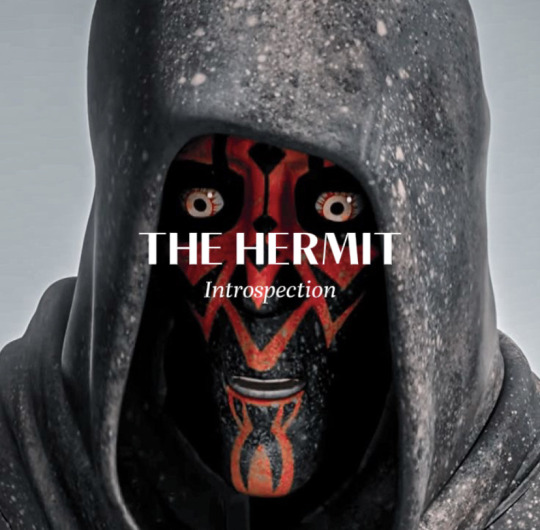
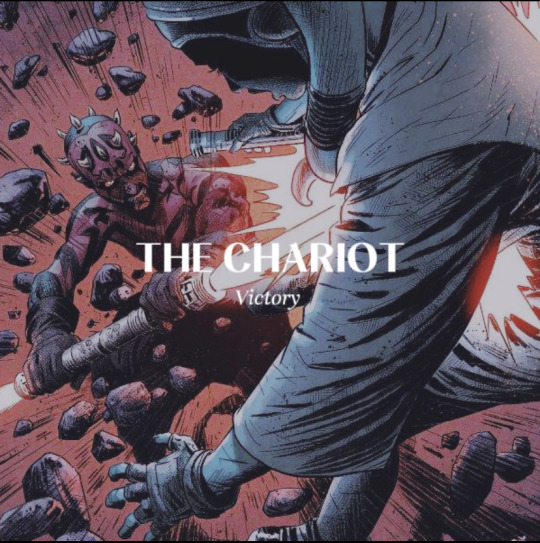




Darth Maul Tarot
Part two
(Totally printing these off at my local Walmart for $5🫡)
#maul#maul opress#darth maul#star wars tarot#witchcraft#star wars#clone wars#pop culture witchcraft#egregore
147 notes
·
View notes
Photo
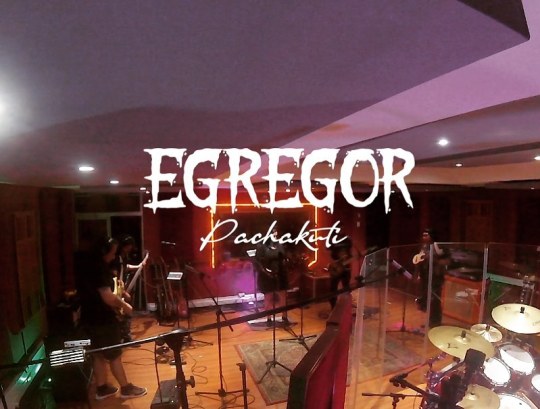
Pronto!!! Por nuestro canal @youtube #blackflagstudiotv el primer #blackflaglive después de 3 años con la tremenda banda #ariqueña @egregoroficial #egregor PRONTO!!!! @elotroenfokefilms @matiasinfrasonido @tuanjok @ripoaudio @magdalilah (en Blackflag Studio) https://www.instagram.com/p/CpjbI57r0g-/?igshid=NGJjMDIxMWI=
0 notes
Text
Egregor, erfahre mehr über diese spirituelle Kraft anhand aktueller Beispiele
Egregor, erfahre mehr über diese spirituelle Kraft anhand aktueller Beispiele
Im 1. Teil dieser Serie habe ich beschrieben, was ein Egregor überhaupt ist. Heute vertiefen wir das Thema und schauen uns einige Beispiele an und sehen, wie sie funktionieren.
Für Menschen, die sich rein akademisch mit Esoterik befassen, mag der Gedanke an Egregore wie ein kurioses Relikt aus früheren Zeiten wirken, wie ein Überbleibsel aus uralter Vergangenheit und daher von geringer…

View On WordPress
0 notes
Text








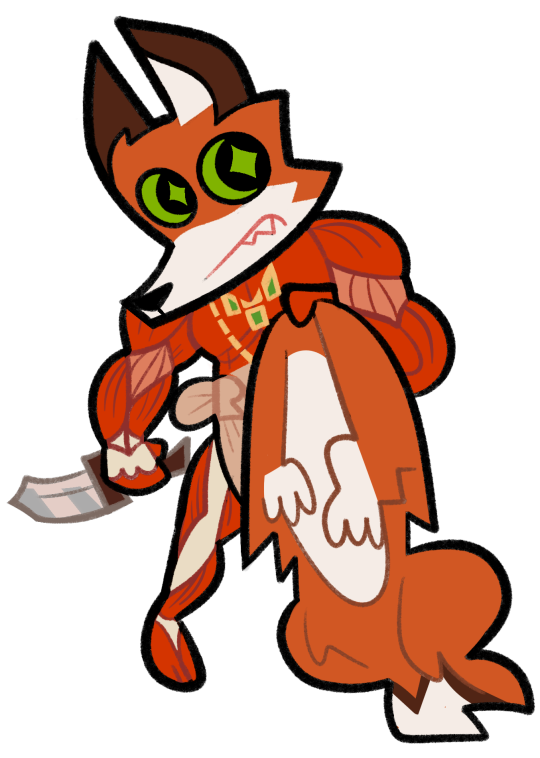

which tortured soul is YOUR favorite? collect them all!
#art#unit vertigo#the egregor#arin paleta#rocket#johnny pinkerton#ars moriendi#celeste cosmos#saint#quinn quantum#charity honeyflower#californiaverse#by: kaz
360 notes
·
View notes
Text
Focused as FUCK. I'm sorry pookie Homelander but i need you to shut the hell up before I let Butcher pimp slap roundhouse kick your gay ass back to the Vought laboratory Bad Room.






#thehermit.txt#laughter is natures medicine#witchcraft#divine masculine#magick#demonology#divine feminine#egregore#unorthodox#homelander#billy butcher#the boys#gen v prime
21 notes
·
View notes